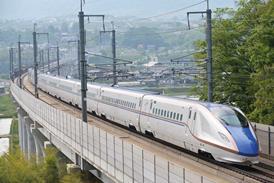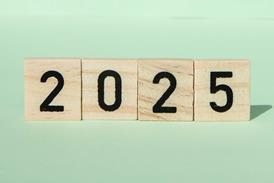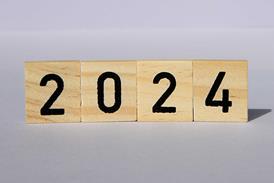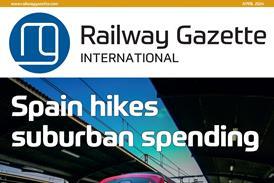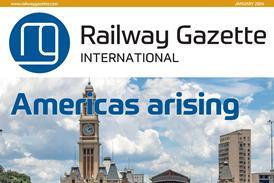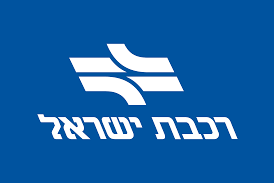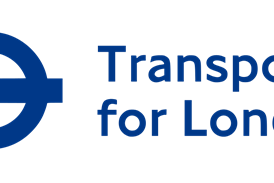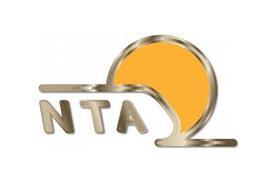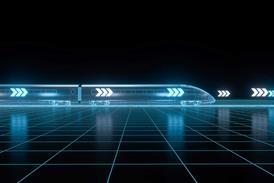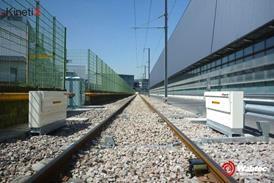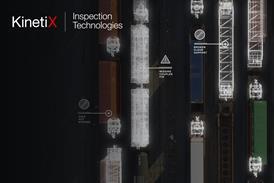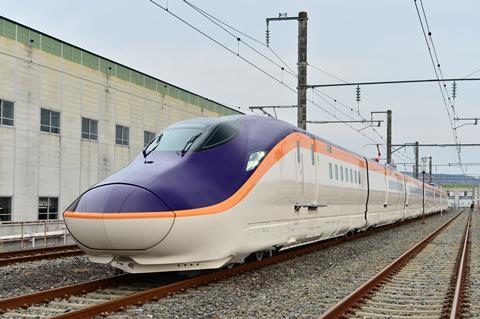
JAPAN: East Japan Railway has unveiled the first of its 300 km/h Series E8 high speed trainsets, which have been ordered for use on services between Tokyo, Fukushima, Yamagata and Shinjo via the Yamagata mini-Shinkansen.
The small-profile trains are intended to replace the 275 km/h Series E3 sets that entered service between 1995 and 2009. The new trains have a 9 m long nose section designed to minimise noise when traversing tunnels at higher speeds.
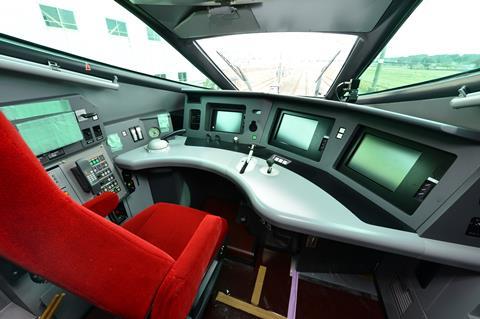
The original order placed in March 2020 covered the supply of 17 seven-car Series E8 trainsets, but this was subsequently reduced to 14 when the railway revised its ridership predictions following the pandemic. A 15th set was reinstated to the order in May 2022 as passengers gradually returned.
Production is being undertaken by Kawasaki Heavy Industries with the involvement of Hitachi.
Designed to take power at 20 kV and 25 kV 50 Hz, the dual-voltage Series E8 has five motored coaches and two trailer cars. All vehicles are fitted with active bogie suspension to enhance ride comfort, especially on the sinuous mountain line west of Fukushima. This part of Tohoku experiences very heavy snowfall, and Hitachi said the fleet was fully winterised.

Each train provides 329 standard class seats and 26 in Green class, all arranged in a 2+2 configuration and with power sockets. Hitachi said the Series E8 offers improved accessibility, with expanded wheelchair spaces. The toilets are designed so that they still be used should the power from the overhead line be lost.
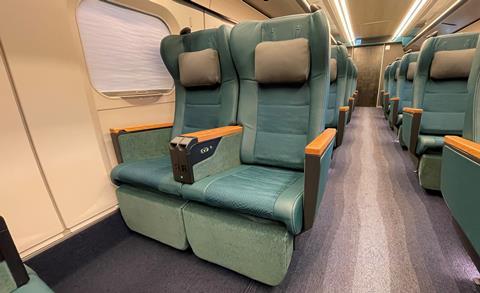
The Series E8 trains have been styled by Ken Okuyama Design, working with engineers from Kawasaki. The livery includes purple inspired by the mandarin duck, one of the symbols of Yamagata Prefecture, white from the snow on Mount Zao on the border of Yamagata and Miyagi prefectures and yellow representing the yellow safflower, another local symbol.
The first set was unveiled at JR East’s Rifu depot and maintenance centre near Sendai on February 26, following delivery for testing and commissioning. The initial trains are expected to enter service in spring 2024, with all to be delivered by 2026.

